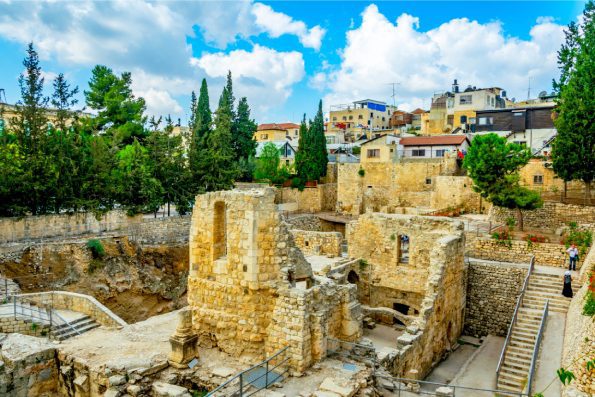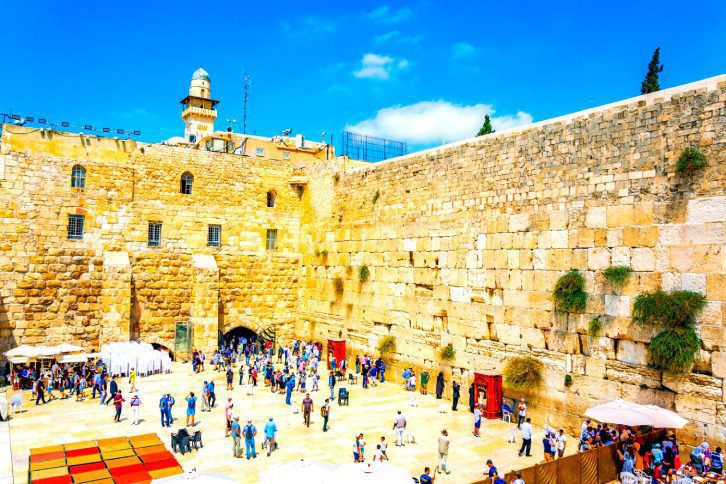Solomon’s Pools are three adjacent storage pools; located about 4 kilometers south of Bethlehem; in the south of the village of al-Khader on the way to Gush Etzion. The capacity of the pools is about 288,000 cubic meters; and they were intended to be used as a source of water supply to Jerusalem during the Second Temple period. Although the pools are named after King Solomon; there is no connection between them and him; as they were built later.
Bethesda Pool

In fact, Solomon’s Pools were built in the days of the Second Temple. Josephus Flavius mentions the spring and the canal that leads the water to Jerusalem in the words:
“[A.D. 28.] But Pilate undertook to bring a current of water to Jerusalem; and did it with the sacred money: and derived the origin of the stream from the distance of two hundred furlongs. However, the Jews were not pleased with what had been done about this water”
(Anquiquites Book 18, Chapter 3, Paragraph 2).
The Dating of Solomon’s Pools
It is not certain when Solomon’s pools were built, but it is believed that this was done in the Hasmonean period or at the latest in the time of Herod; when the Second Temple was renovated, which led to a large increase in the number of pilgrims, and these needed a larger water supply. According to one estimate, the aqueduct system that passed through entire pools had an output of 60 cubic meters per hour.
Archaeologist Zvi Ilan believed that Solomon’s pools were built during the Roman Empire (late 2nd century); and based his reasoning on the findings of the structure of the water female. It is possible that the third and lowest pool of all was hewn in the Mamluk period; in the days of Sultan Baibars, as during the 10th century, the Muslim geographer Mokdasi described two pools, while the traveler Felix Fabri; who visited the site in the 15th century, described three pools.
Jerusalem Ultimate Guide

Solomon’s Pools were fed by two aqueducts, by several springs of the surrounding countryside including one situated underneath the lower pool; as well as by rainwater that descended from the hills. The pools served as a storage and distribution facility; with the two feeder aqueducts bringing water to the pools from the hills to the south.
The collected water was then distributed by two other aqueducts leading from the pools northwards to Jerusalem, plus another one heading eastwards to the Herodium. Traces of all five aqueducts have been found.
Below the middle pool are the remains of the British pump station that took the water by a pipe to the Old City of Jerusalem. Another, more recent pumping station below the lower pool is still providing water to the town of Bethlehem

